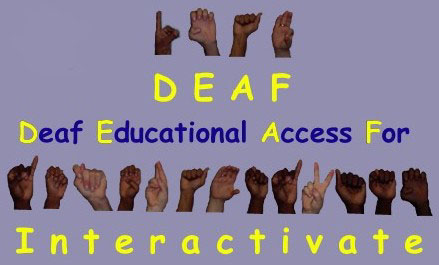
 ASL | This applet allows the user to simulate how nature keeps its balance. This applet shows how wolves and rabbits would behave in their natural setting. |
 ASL | The general rules of this applet are: Two rabbits cannot occupy the same section of grass. Two wolves cannot occupy the same section of grass. |
 ASL | Each rabbit can only eat grass when he has not reached his maximum food capacity. (The maximum food capacity can be modified). |
 ASL | A wolf will not eat another rabbit if eating that rabbit will make him surpass his maximum food capacity. (The maximum food capacity can be modified). |
 ASL | Rabbits and wolves can only reproduce when they reach a certain age and have a sufficient amount of food. (The age of reproduction and amount of food required to reproduce can be modified). A rabbit cannot reproduce if there is a wolf around her. |
 ASL | Rabbits and wolves can only move up, down, left, or right one space at a time. |
 ASL | Rabbits and wolves die if they get too old or if there is insufficient food. (Maximum age can be modified). |
 ASL | The grass growth rate is 1. (This growth rate can be modified). |
 ASL | The rules for the births and deaths of rabbits and wolves are a bit more detailed. Let's begin with rabbits which have the following (adjustable) default parameters:
|
 ASL | Using this information, along with the general rules, the computer will determine where each rabbit will move, and whether it will live, die, or reproduce during each stage. |
 ASL | Wolves have the following (adjustable) default parameters:
|
 ASL | Using this information, along with the general rules, the computer will determine where each wolf will move, and whether it will live, die, or reproduce during each stage. |
 ASL | Classroom Resources
|


Developed by
The Shodor Education Foundation, Inc.
Copyright © 2002 by The Shodor Education Foundation, Inc
This project is supported, in part, by the National Science Foundation
Opinions expressed are those of the authors and not necessarily
those of the National Science Foundation.
